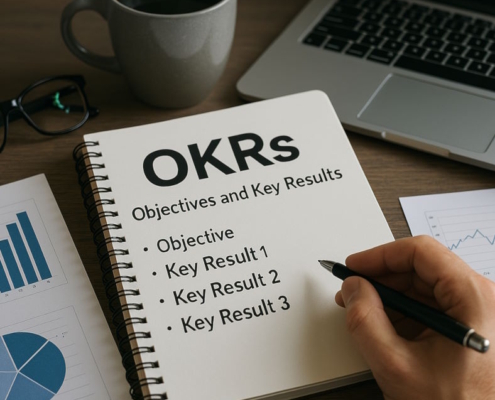-
Introduction to General Damages
Defining General Damages
General damages are awarded to compensate for non-economic harm that cannot be precisely measured. These damages include pain and suffering, emotional distress, and loss of enjoyment of life, among others. They differ from special damages, which are calculable monetary losses such as medical bills, and punitive damages, which are meant to punish the defendant rather than compensate the plaintiff.
For example, in a personal injury case, a plaintiff may claim special damages for hospital expenses and lost income, while also seeking general damages for the emotional trauma and physical pain endured as a result of the injury. General damages acknowledge that not all harm can be monetarily quantified, yet the injured party deserves fair compensation.
Importance in Civil Litigation
The role of general damages is particularly significant in cases involving personal injury, defamation, and other torts where non-economic harm often constitutes the primary injury. These damages serve to provide a measure of justice by addressing the full spectrum of harm caused by a defendant’s actions.
-
Types of General Damages
Understanding the various categories of general damages helps illustrate their broad application in civil law. Some of the most common types include:
Pain and Suffering
This category encompasses the physical pain experienced due to an injury or condition caused by the defendant’s actions. For instance, chronic back pain from an accident falls under general damages.
Emotional Distress
Emotional distress general damages address psychological harm, such as anxiety, depression, or post-traumatic stress disorder (PTSD), that results from the incident. Emotional trauma is especially prevalent in cases involving harassment, defamation, or severe accidents.
Loss of Enjoyment of Life
This category compensates for the diminished ability to enjoy life’s pleasures, such as participating in hobbies or spending time with loved ones. For instance, a professional athlete who can no longer play their sport due to an injury might claim general damages for loss of enjoyment of life.
Loss of Consortium
Loss of consortium refers to the deprivation of companionship, affection, or intimacy within a familial or marital relationship. This type of general damages is often sought by the spouse or family members of the injured party.
Disfigurement and Physical Impairment
When an injury results in permanent scarring or physical impairment, general damages may be awarded to address the long-term impact on the plaintiff’s appearance and functionality.
Reputational Harm
In defamation cases, general damages often include compensation for reputational harm, which encompasses the emotional distress and societal consequences of losing one’s good name.
These categories demonstrate the versatility of general damages in addressing a wide array of non-economic harms.
-
Legal Principles Governing General Damages
Standards for Awarding General Damages
Courts rely on a variety of principles when assessing general damages. These include the “reasonable person” standard, which evaluates how a typical person in the plaintiff’s situation might have been affected. For instance, a court may consider whether a reasonable person would find the plaintiff’s emotional distress credible given the facts of the case.
Proportionality is another guiding principle. Courts strive to ensure that the damages awarded are proportional to the severity of the harm suffered. For example, a minor inconvenience is unlikely to result in a significant general damages award.
Judicial Discretion
Judges often have broad discretion when determining the amount of general damages. This discretion is guided by precedent, statutes, and the unique circumstances of each case. For example, in cases involving severe emotional trauma, a court may rely on expert testimony to assess the extent of the harm and its appropriate compensation.
Relevant Statutes and Precedents
In some jurisdictions, statutes may impose caps or limitations on general damages. For instance, certain personal injury cases may have statutory limits on awards for pain and suffering. Precedents also play a crucial role, as courts look to previous rulings to guide their decisions on similar cases.
-
Quantifying General Damages
Challenges in Quantification
The inherent subjectivity of general damages makes their quantification challenging. Unlike medical bills or lost income, which have clear monetary values, the impact of pain, suffering, or emotional harm varies widely among individuals. This subjectivity often leads to discrepancies in awards.
For instance, two plaintiffs with similar injuries may receive vastly different general damages awards based on their individual experiences and the persuasiveness of their evidence.
Methods of Calculation
Despite these challenges, courts and attorneys have developed methods to estimate general damages:
- Multiplier Method: This approach involves multiplying the plaintiff’s economic damages (e.g., medical expenses) by a factor that reflects the severity of the non-economic harm. For instance, a severe injury might warrant a multiplier of 5, while a minor injury might use a multiplier of 1.5.
- Per Diem Method: This method assigns a daily monetary value to the plaintiff’s pain and suffering and multiplies it by the number of days the plaintiff is expected to endure the harm. For example, if daily suffering is valued at $100 and the plaintiff is expected to recover in 200 days, the general damages would amount to $20,000.
- Expert Testimony: Psychologists, medical professionals, or vocational experts may provide testimony to support claims for emotional distress or loss of enjoyment of life.
Caps and Limitations
Some jurisdictions impose caps on general damages, particularly in medical malpractice cases. These limitations aim to prevent excessively high awards that could burden defendants or inflate insurance costs.
-
Critiques and Challenges of General Damages
Subjectivity and Unpredictability
Critics argue that the subjective nature of general damages leads to inconsistencies in awards. For instance, juries in different regions may award vastly different amounts for similar injuries based on cultural or personal biases.
Risk of Arbitrary Awards
The lack of standardized guidelines increases the risk of arbitrary or excessive general damages awards. Defendants may face uncertainty, while plaintiffs may struggle to anticipate the potential value of their claims.
Socio-Economic Considerations
Disparities in general damages awards often reflect broader societal inequities. Plaintiffs from affluent backgrounds may receive higher awards due to perceived higher standards of living, while others may be undervalued.
Potential Solutions
Legal scholars and lawyers have proposed several solutions to address these challenges, including:
- Standardized award guidelines for common injuries.
- Enhanced judicial training to reduce bias.
- Greater reliance on expert testimony to provide objective assessments.
- Example of General Damages
A practical approach to understanding general damages involves applying these principles to hypothetical scenarios. Consider the following case:
Fact Pattern:
A 35-year-old professional pianist suffers a hand injury due to a car accident caused by a negligent driver. The injury requires multiple surgeries and leaves the plaintiff with limited mobility in their fingers. As a result, they are unable to continue their career and experience significant emotional distress.
Plaintiff’s Argument
The plaintiff seeks general damages for:
- Pain and suffering caused by the injury and recovery process.
- Loss of enjoyment of life, as they can no longer play the piano.
- Emotional distress, including depression and anxiety.
Defense’s Argument
The defense argues that:
- The plaintiff can still perform other activities unrelated to piano playing.
- The emotional distress claims are exaggerated and lack sufficient evidence.
Discussion Points
- How should the court assess the plaintiff’s claims for pain and suffering?
- Should the plaintiff’s unique circumstances (e.g., their profession) affect the damages award?
- What methods of quantification would be most appropriate in this case?
Conclusion
General damages are a critical component of civil litigation, addressing the intangible harm suffered by plaintiffs in a variety of cases. By understanding their types, legal principles, methods of quantification, and associated challenges, legal professionals can advocate effectively for fair compensation. While subjectivity and unpredictability remain challenges, tools like the multiplier and per diem methods, along with judicial discretion, help navigate these complexities. Through practical application and critical discussion, legal practitioners and students can deepen their understanding of this essential aspect of the law.






























